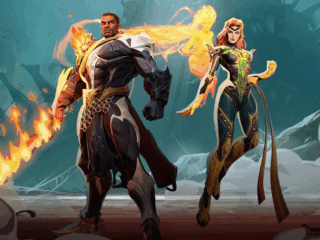
Over the past decade, video games have emerged from their niche and become a true cultural phenomenon. Players spend a lot of time in the digital environment, forming communities and finding like-minded people. Clans have become a popular phenomenon in multiplayer games, combining the functions of a team, a club of interest, and even a kind of ‘family.’ In this article, we will discuss this phenomenon, how online games have become a platform for creating a new form of brotherhood, and how clans help develop video games.
Origins of Clans in Video Games
In fact, clans in video games are not a new phenomenon; the first ones appeared back in the 90s, when online games were just beginning to gain popularity. The most popular games were Doom, Quake, and CS 1.6, which are still often mentioned in counter strike news and other gaming platforms. These titles became the foundation for the formation of gaming associations and esports. Players gathered in local clubs, held long gaming sessions together, and formed teams.
Clans were not just a list of nicknames – they created symbols, developed their own rules and had an internal hierarchy. It made the game deeper and the sense of belonging stronger. It was then that the very “digital fraternal code” was born, which has survived to this day.
Clans in the World of Esports
With the development of the e-sports industry, not only teams appeared, but also entire communities of fans. Competitions between these clans have grown into tournaments, and some players even grow to a professional level. Counter-Strike, Dota 2, LoL and Valorant gave a good impetus to the development of the industry and the formation of teams that have already fought not only for glory, but also for prize funds. So if you are a fan of a particular room, join the fan communities and take part in the matches.
It is important to note that modern clan associations have many functions. They are not only based on in-game chats or voice channels, but also create their own websites, media resources, and even news platforms. As you can read in val news, clan histories in esports are intertwined with the development of the entire gaming community. This confirms that clans have long gone beyond simple gaming structures, transforming into full-fledged social entities.

Social Functions of Clans
Clans in video games also have several social functions. They serve as modern digital clubs. They provide:
- Communication and support – beginners receive advice from experienced players, and veterans find like-minded people.
- Organization of time – training, tournaments and internal events help participants to structure leisure.
- Identity formation – symbolism, nicknames, internal memes create a common cultural space.
- Skill development – tactical thinking, team interaction and strategy become familiar tools for participants.
In fact, clans in video games have become analogous to traditional social groups, only in a digital environment. Moreover, joining them is quite simple; in most cases, you just need to reach the required level to join the clan and submit an application. Most fan clans are free to join, so any player can become part of this gaming community.
Clans Beyond the Game
Interestingly, clan communities are gradually moving beyond video games themselves. They create joint media projects, engage in streaming, develop charitable initiatives or even meet offline.
This phenomenon demonstrates how unity around a common goal in the digital environment can transform into a genuine community. For many players, the clan becomes an environment that helps them feel stability, find friends, and even discover professional opportunities.
Clan communities actively use social networks and specialized platforms to gather popularity and develop their own identity. They hold thematic events, tournaments and competitions, attracting new participants and forming a sense of common purpose. This approach not only strengthens the internal ties between the participants, but also creates a recognizable clan brand in the digital space, which can become a starting platform for a career in e-sports or media projects.
Challenges and Future Prospects
Despite all the above advantages, clan systems have certain disadvantages. Among the main ones are conflicts within the group, different players may not have a common opinion and begin to argue about certain game situations. However, if you avoid such conflicts and find a solution, clans only vice versa will help to strengthen the relationship between the players.
The prospects for clan development are quite good and are linked to further integration into social platforms. If these gaming communities expand and integrate new technologies such as VR and AR, they will be able to gain greater popularity and functionality. The use of clans in esports opens up new opportunities and formats for tournaments, making them unique and interesting.
Conclusion
Putting all the facts together, we can say that digital brotherhood in the form of clans is becoming an important part of the gaming industry. Clans have evolved from small groups united around a single game to large social communities that influence both the development of games and the formation of values in the virtual world. Today, clans are an important part of multiplayer video games. It’s not just about winning the game, but also about mutual support, teamwork, and creating new opportunities for players. If clans continue to develop on a global scale, they will have a positive impact on the development of the gaming industry.












